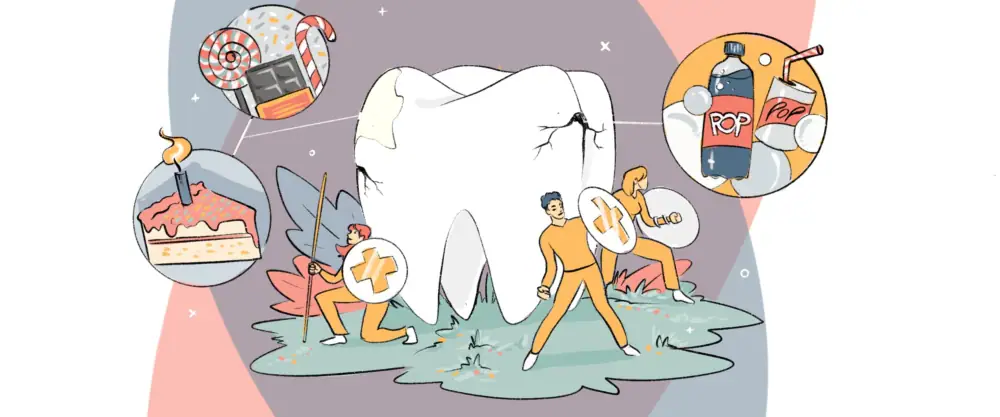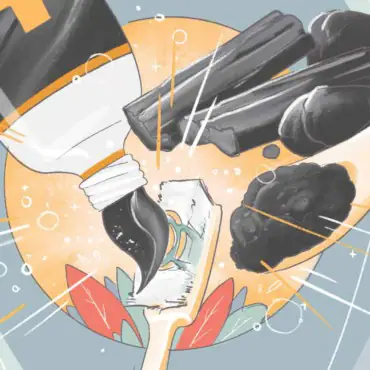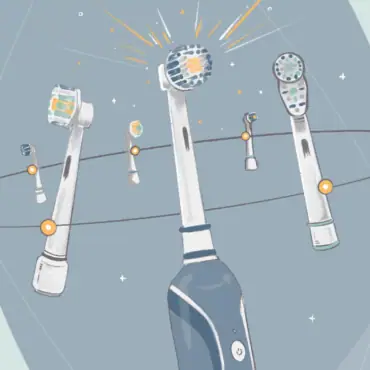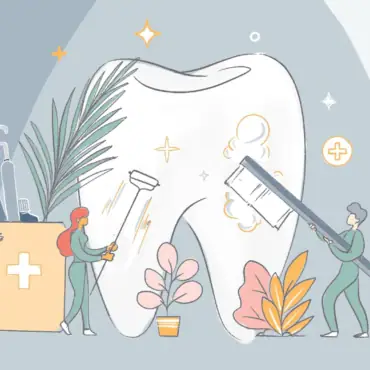If you’re like most people, you’ve probably heard the dentist tell you a time or two you have a cavity. It’s one of the most common health conditions in existence.
Early stages of a cavity can be hard to identify, and if it’s left without treatment, the decay can get much more painful overtime.
So, if you’re wondering what a cavity looks like, how to recognize one, and when you need to see a dentist, you’re in the right place! Let’s explore.
Due for a checkup?
Find a top rated dentist near you that takes your insurance.
What does a cavity (tooth decay) look like?
What does it sound like a cavity would look like? A hole, right?
That’s essentially what a cavity is. It begins to develop because of a buildup of plaque and tartar on your teeth. Harmful bacteria hang out in this buildup and can lead to tooth decay. If it hangs out at the gum line, it can also contribute to you developing gum disease, also known as gingivitis.
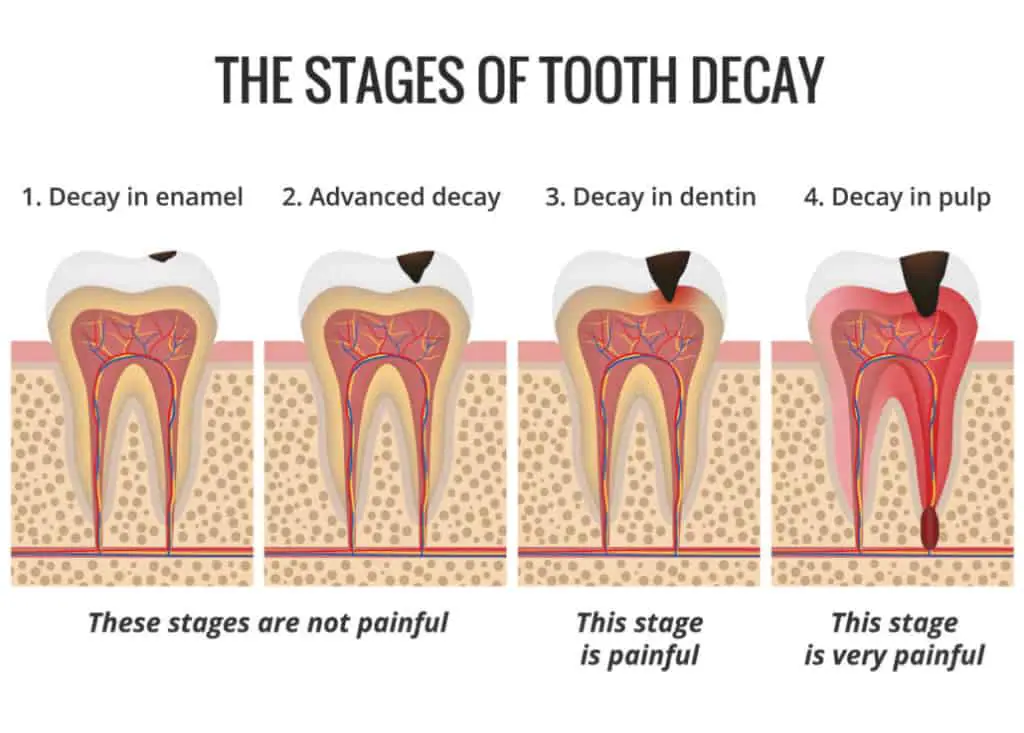
Before a cavity gets going strong, you may notice a little white spot on your tooth. This is a sign that your tooth is beginning to lose minerals, a process called demineralization.
If nothing is done to stop the progression, your tooth will continue decaying and a small hole will develop. Voila. A cavity.
What does a cavity look like between teeth?
A cavity between two teeth is called an interproximal cavity. As you might imagine, it is difficult to spot because the teeth on either side mask the visible signs of a cavity, especially while it is small.
You’ll typically only notice it once the decay has progressed enough to break through the tooth enamel to the layer of tissue underneath, called the dentin. This layer is more sensitive to hot and cold, causing tooth sensitivity to temperature or pain when eating and drinking.
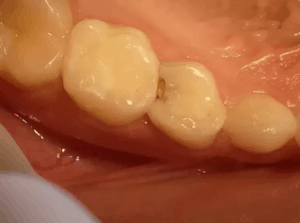
The best way to spot these types of cavities early is to visit your dentist. Cavities show up as a dark spot on a dental x-ray image of your tooth.
What do pre-cavities look like?
It takes a while for full-blown holes to develop in your teeth. How long depends on a number of factors including your dental hygiene and eating habits. Snacking on sugary foods and ignoring proper dental habits like brushing and flossing can speed things along faster. However, there are signs a cavity is coming that appear before the hole begins to form.
As the tooth begins to lose minerals, little white spots can appear on your teeth. Obviously, it will be hard for you to see them yourself, but it is one of the things your dentist and dental hygienist are watching for when you come to visit.
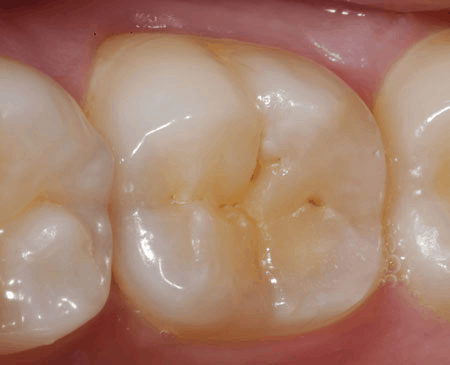
They can help you catch these ‘pre-cavities’ and even reverse the process before the damage becomes too great.
What do cavities look like in toddlers?
Did you know toddlers can get cavities too? It doesn’t take years and years of exposure to plaque and tartar buildup for it to happen.
Some people are lax about caring for their children’s teeth, assuming it isn’t as important because they will lose them anyway. While this may be true, problems in baby teeth can lead to problems in adult teeth and it is better to form good dental care habits early.
Cavities in toddlers appear as little white spots on the teeth. If the teeth are not properly cared for, the spots will turn brown as the cavity worsens. Keep in mind cavities don’t always hurt, so even if your child doesn’t complain about a toothache, trouble is brewing if you see these signs on their teeth.
What does a cavity filling look like?
When the damage has progressed far enough to create a significant cavity in the tooth, it must be filled. A cavity is a perfect harbor for bacteria and plaque to build up, meaning the tooth will only continue to decay.
Left to its own devices, the tooth will continue to decay until the pulp, the innermost section of the tooth, gets infected. This generally leads to an abscess and you may require a root canal to treat the root of the tooth if the damage is severe enough.
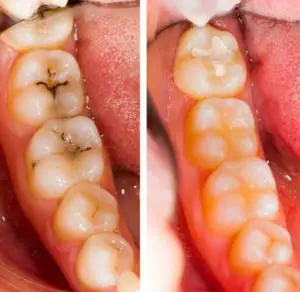
There are various materials dentists can use to fill cavities. The most inconspicuous are made from a tooth-colored composite material. Amalgam fillings have been a favorite among dentists for over 100 years due to their durability and cost-effectiveness. These dental fillings are silver colored. Other materials dentists use include porcelain, gold, or silver.
How can I tell if I have a cavity?
Especially in the early stages, it is difficult to tell that you have a cavity. Once the decay reaches the inner layer of dentin, you may experience toothaches, pain when chewing, or sensitivity to hot and cold.
Before this stage, however, it is common to feel nothing at all. You can keep an eye on your teeth by watching out for white, brown, or black spots on your teeth. As the cavity further develops, you may be able to see holes in your teeth.
Keep an eye on your gums as well. Since bacteria buildup is at the root of both gum disease and tooth decay, they can happen simultaneously. If you notice redness at the gum line or your gums are tender and bleed when you brush and floss your teeth, you may have a cavity forming along with mild gum disease.
Due for a checkup?
Find a top rated dentist near you that takes your insurance.
You should see a dentist immediately if you notice any of these signs or symptoms. The longer the cavity is left alone, the worse it will become.
Can a cavity heal on its own?
A cavity generally can’t heal on its own, but it can be reversed to an extent if caught in the early stages and treated. As we said earlier, the tooth begins losing minerals as the cavity begins to form. When the cavity is discovered it can be remineralized with professional fluoride treatments or by switching to a toothpaste with fluoride. Done early enough, the tooth can repair itself to an extent as well as fortify the tooth against future tooth decay.
If you suspect you have a cavity, see a dentist right away. The earlier you detect and treat a cavity, the cheaper and easier the treatment is. The best way to prevent cavities is to see a dentist at least every 6 months.
You should always brush and floss your teeth daily, step up your daily regimen if you suspect a cavity is forming. Regularly removing plaque and tartar buildup is the most effective method of cavity prevention.
If you find yourself prone to cavities, talk to your dentist about switching to fluoride toothpaste.
When should I see a dentist?
Do you have a toothache? Have you spotted white spots on your teeth? Has it been six months since your last dental exam? All of these are valid reasons to go visit the dentist. Whether you have active cavities developing or not, it is highly beneficial to your overall oral health to regularly visit your dentist.
Still need answers?
Book with a top-rated dentist in your city to get the treatment you need.
Don’t have a dentist? Allow us to help! Our mission is to educate people about good oral hygiene and care. To do that, we maintain a registry of amazing dental professionals whose main goal is to ensure your best oral health.
Find a dentist in your area and level up your oral wellness today!

